一、什么是逻辑回归
逻辑回归 Logistic Regression
逻辑回归:解决分类问题
回归问题怎么解决分类问题?
将样本的特征和样本发生的概率联系起来,概率是一个数。


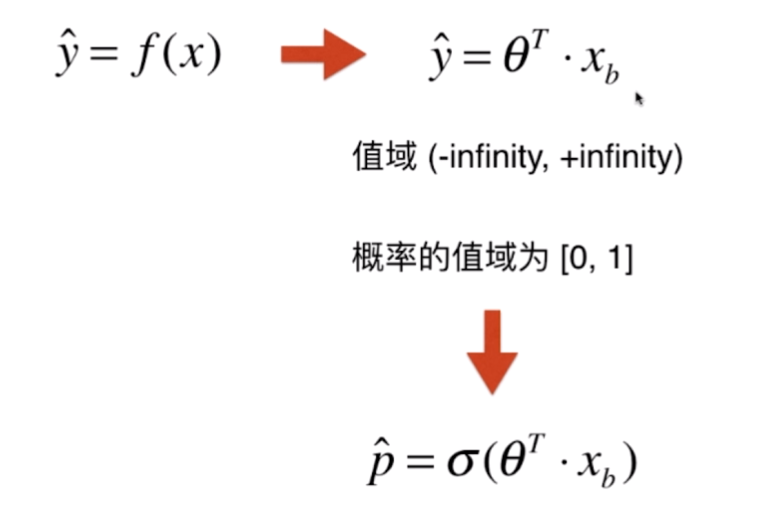
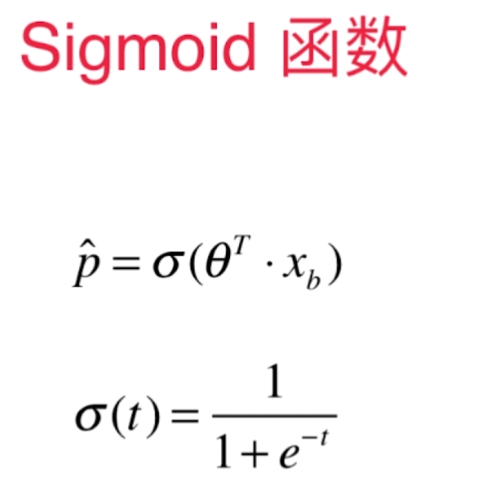
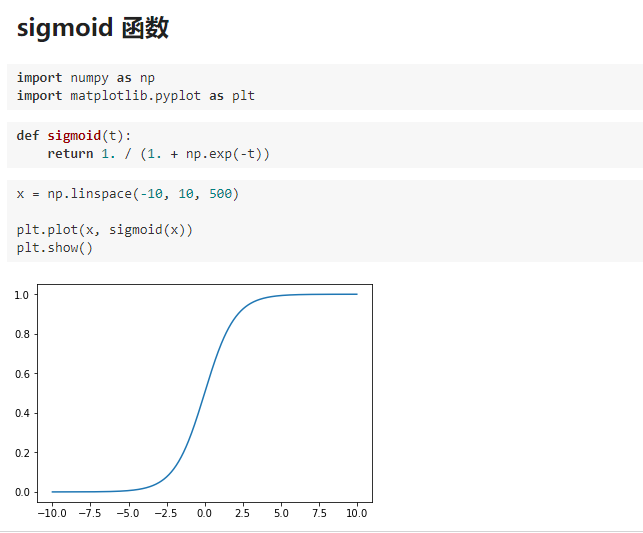
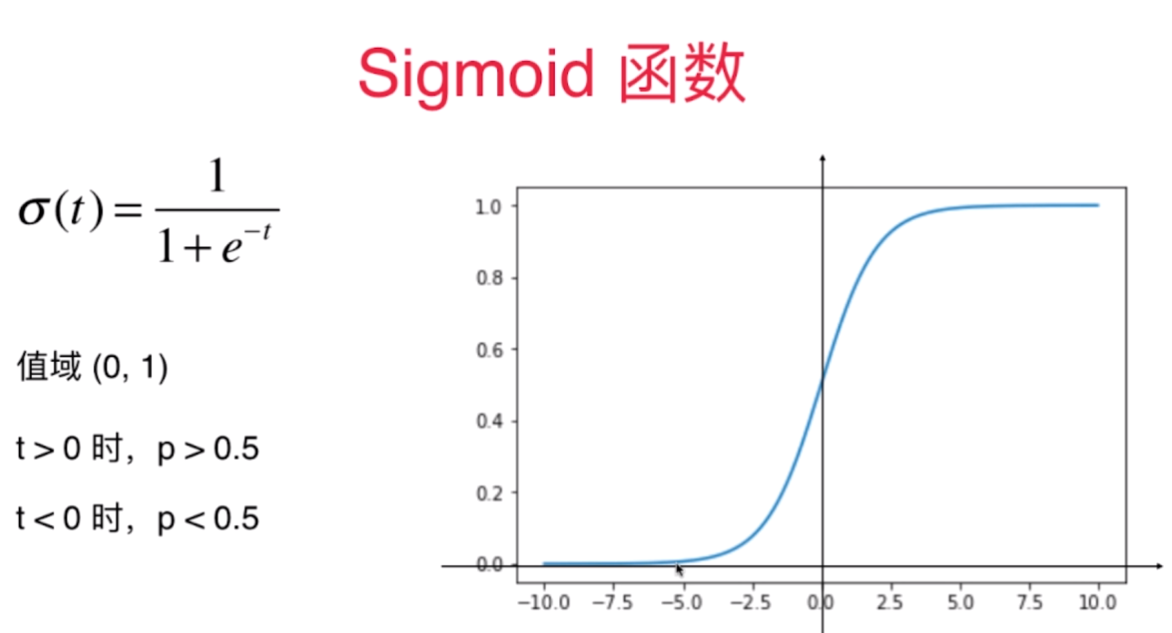
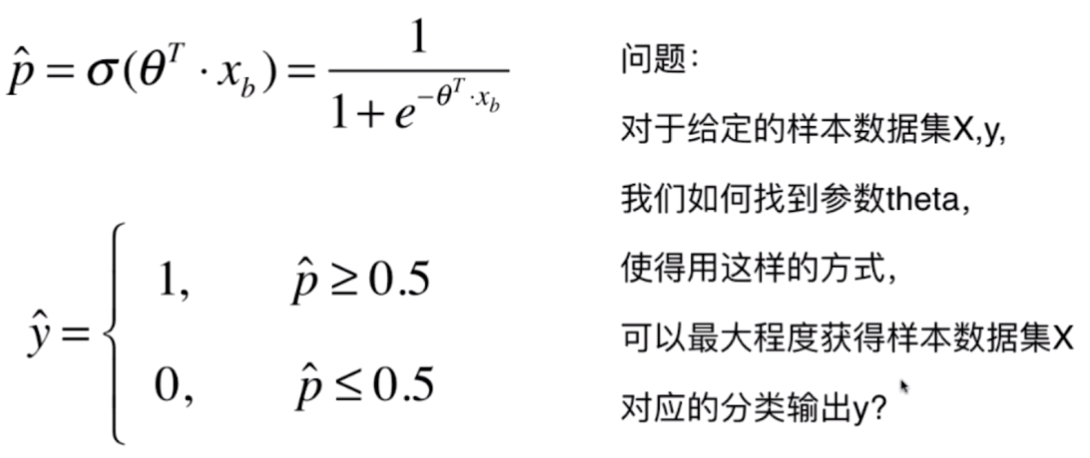
二、逻辑回归的损失函数

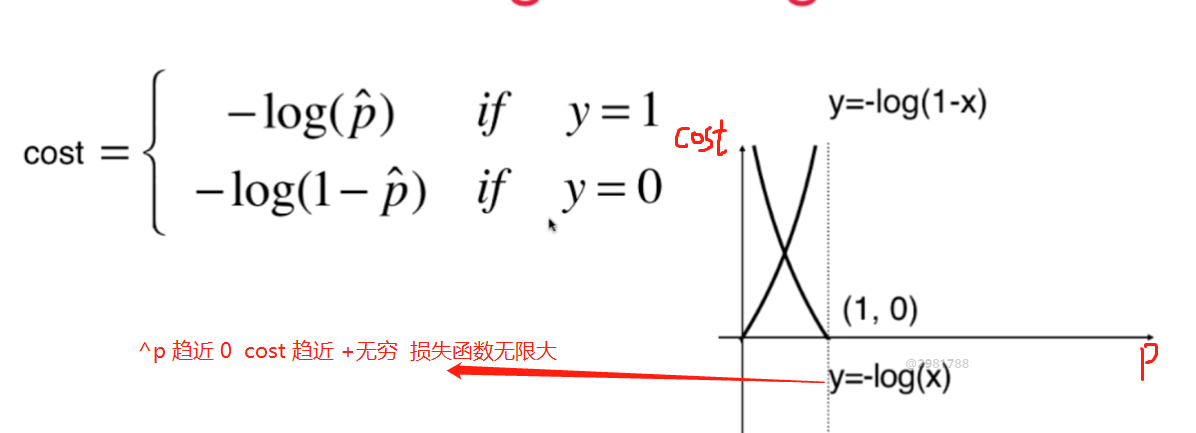
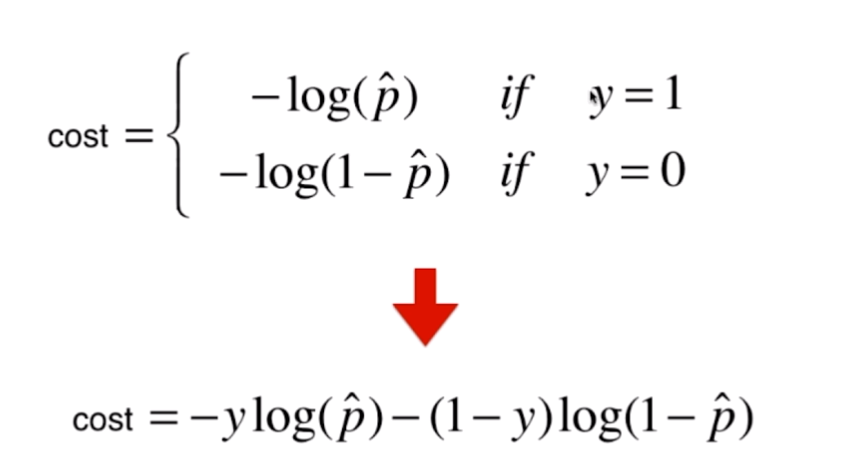
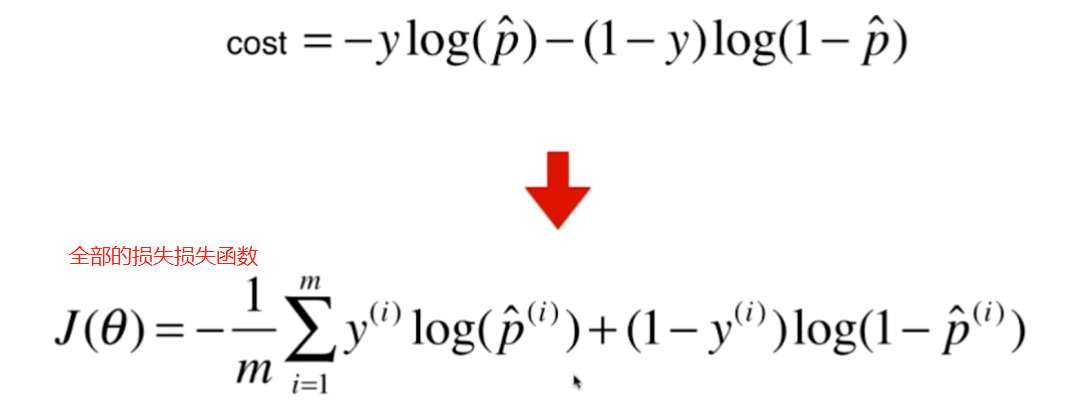
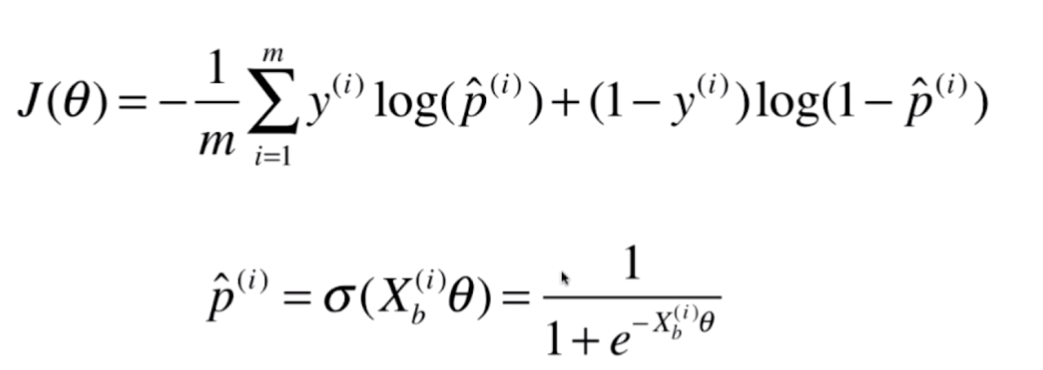
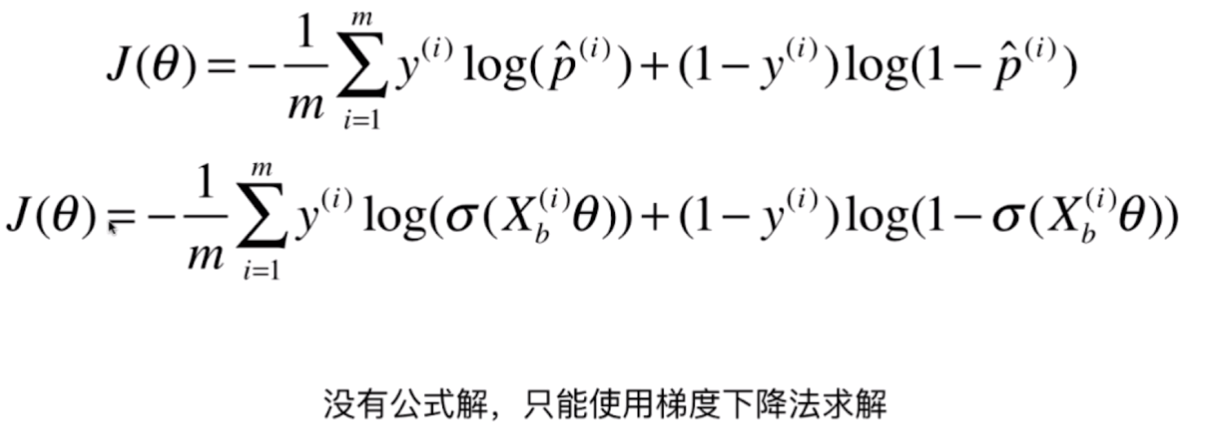
三、 逻辑回归损失函数的梯度
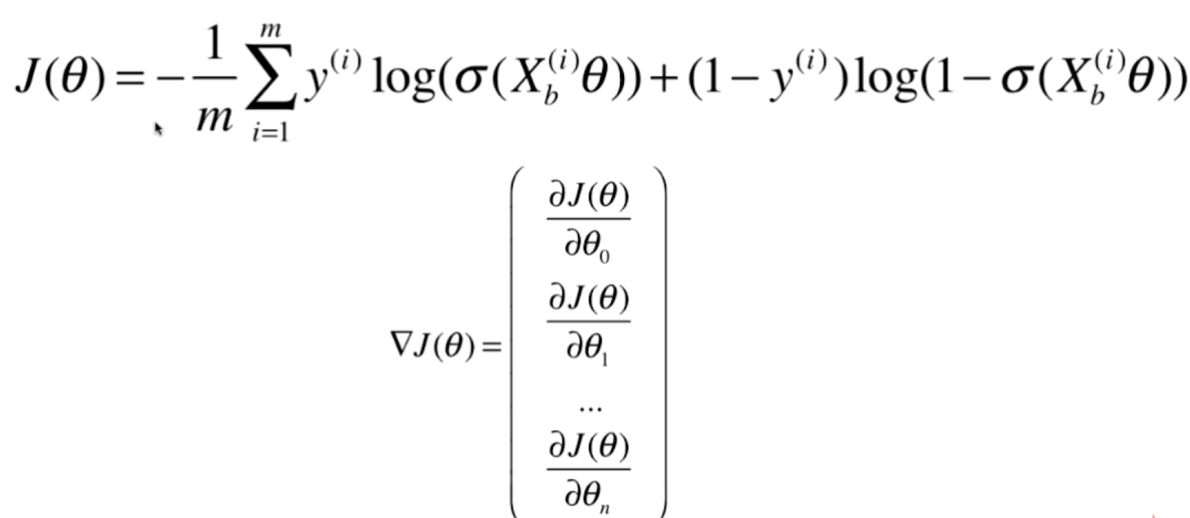
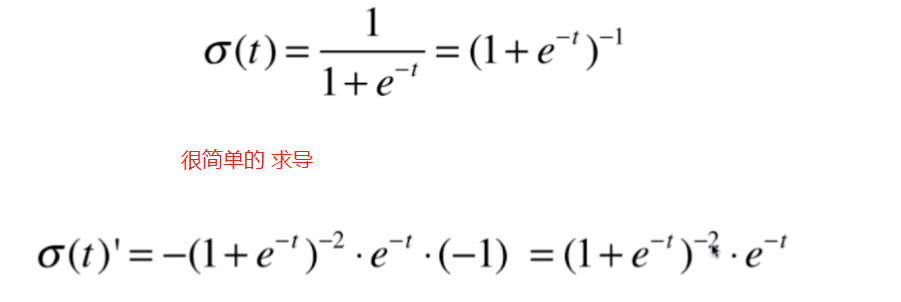
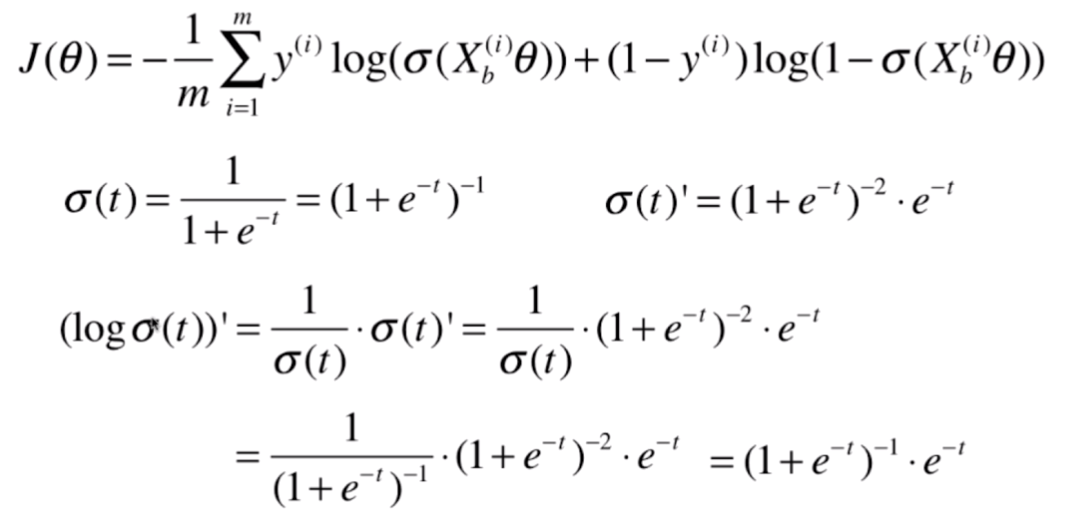
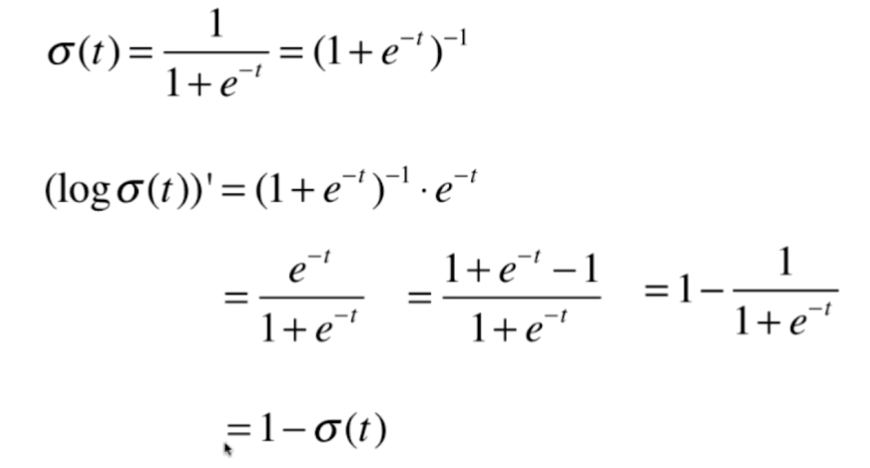
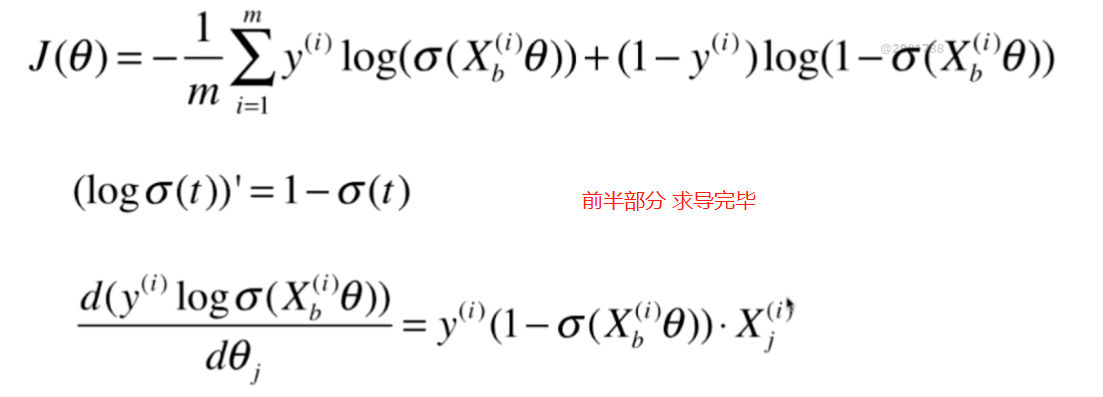
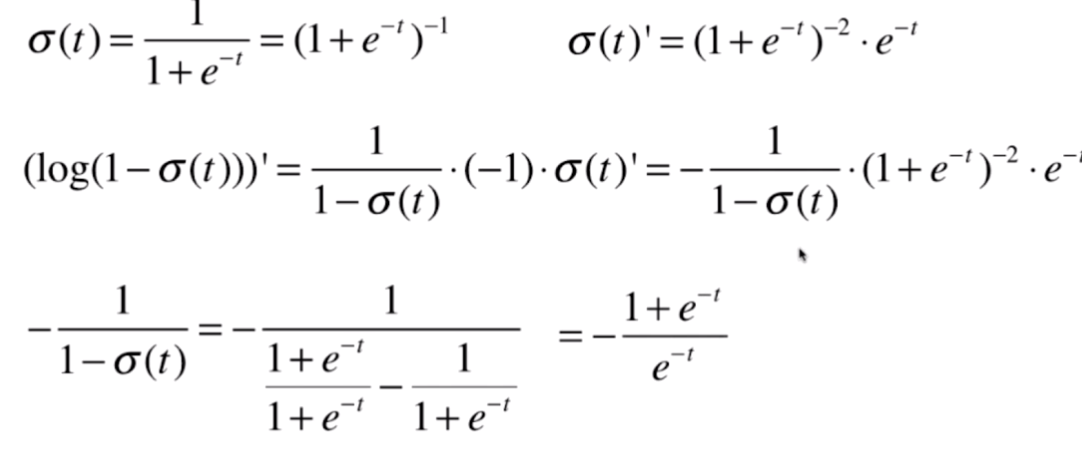
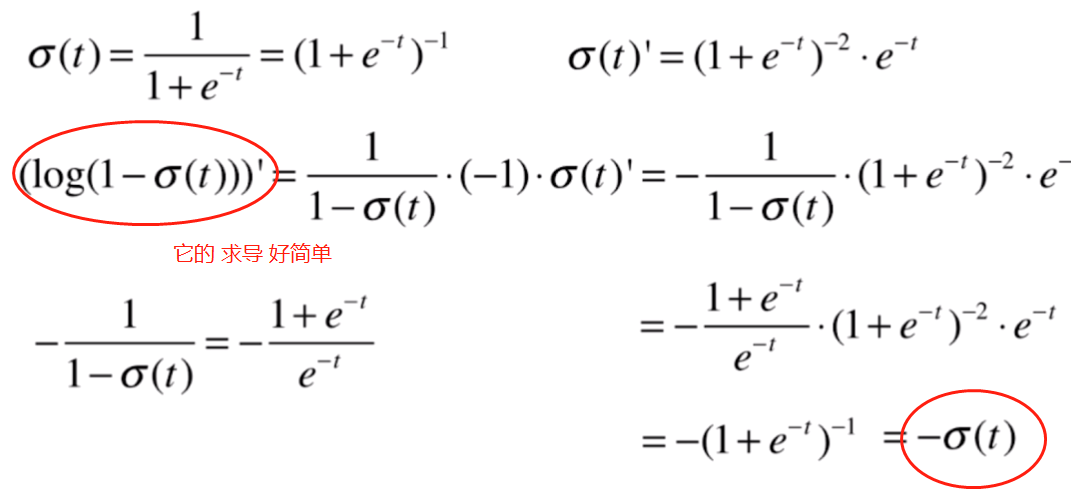
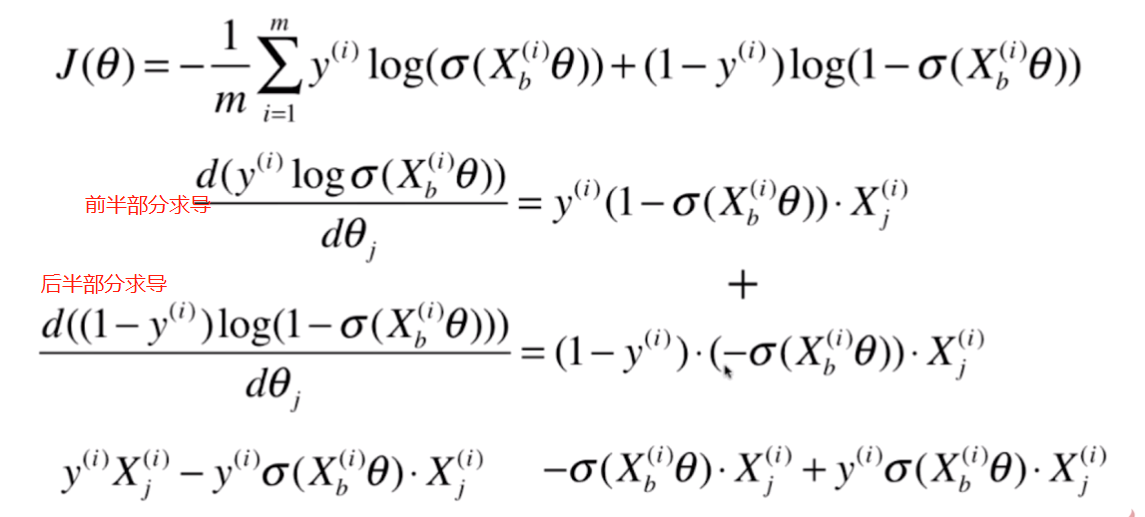
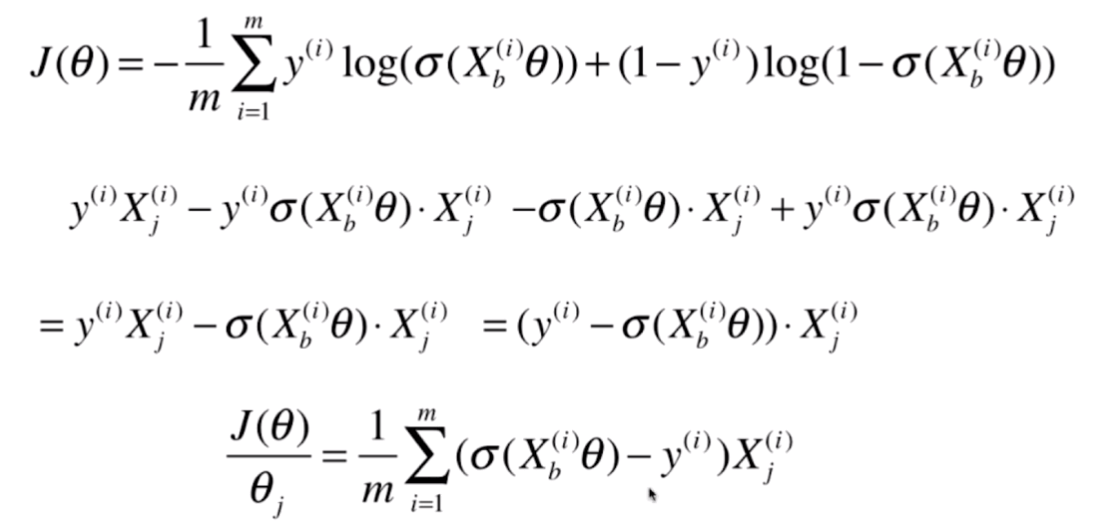
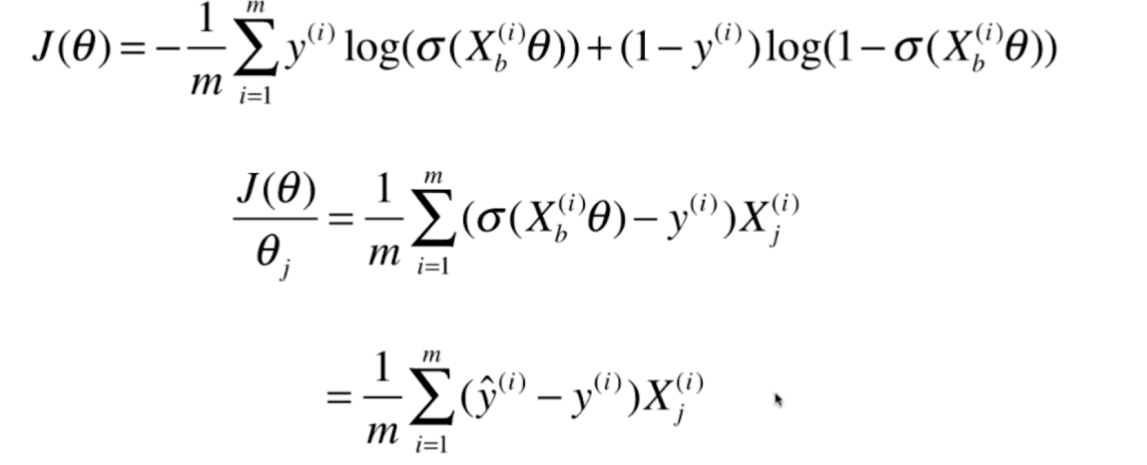
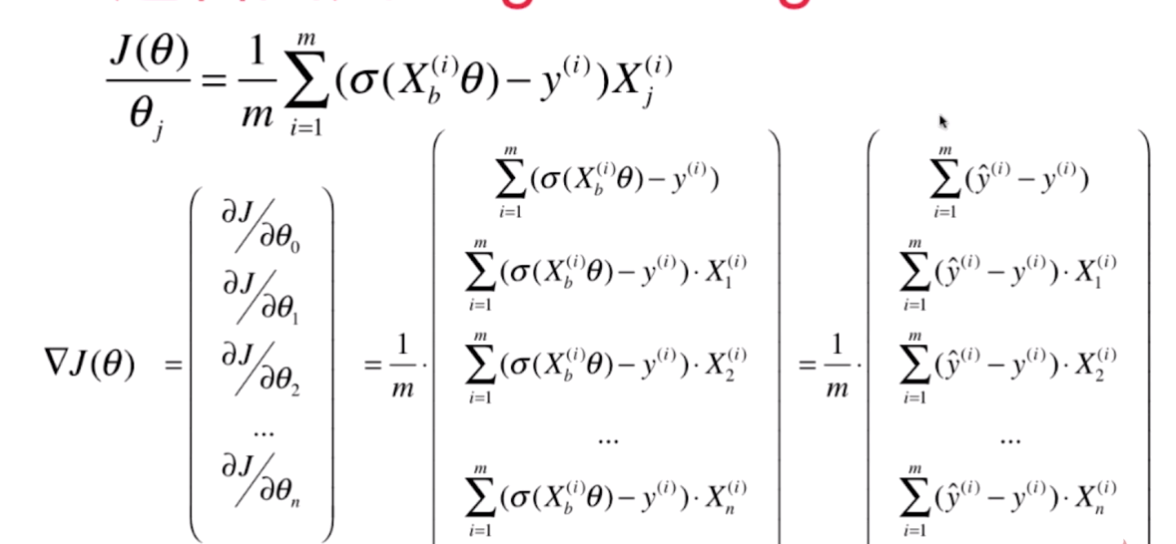
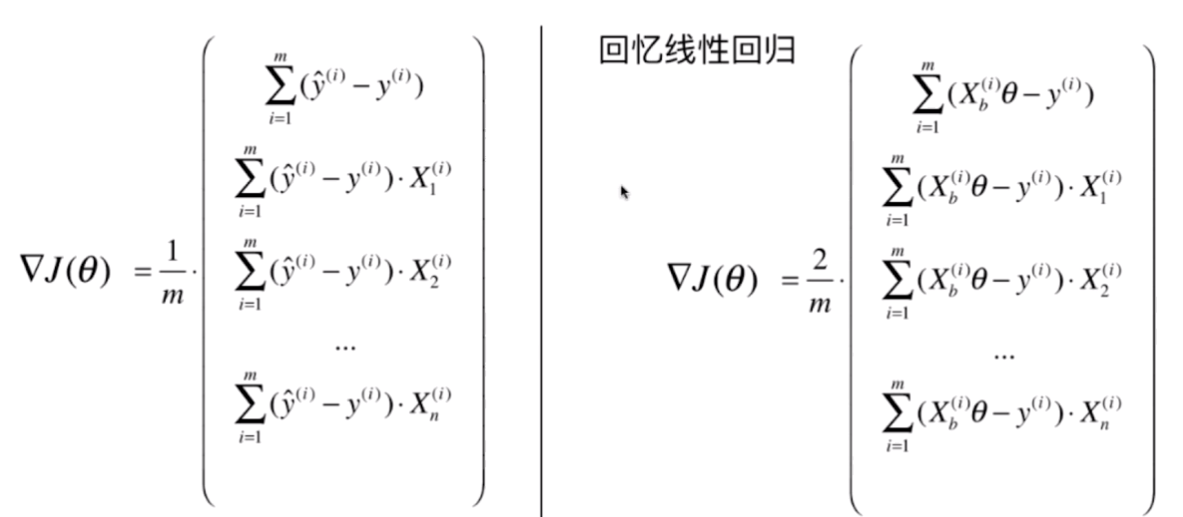
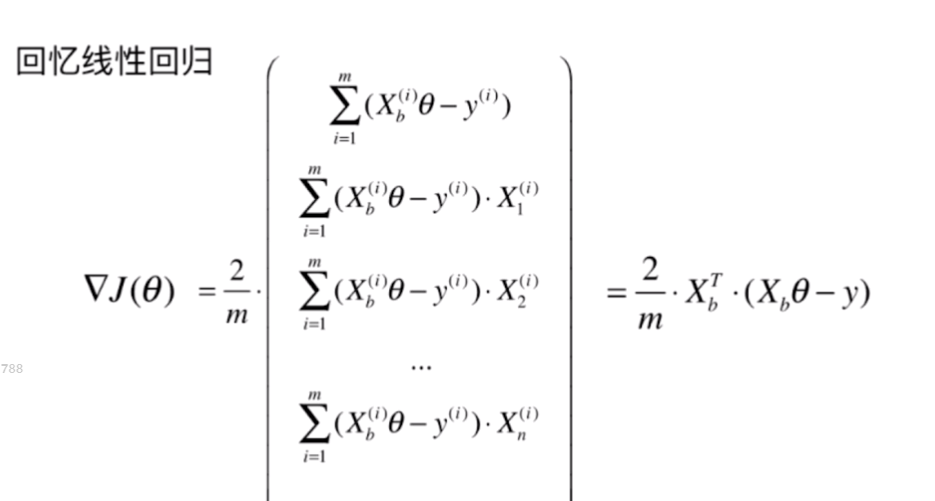
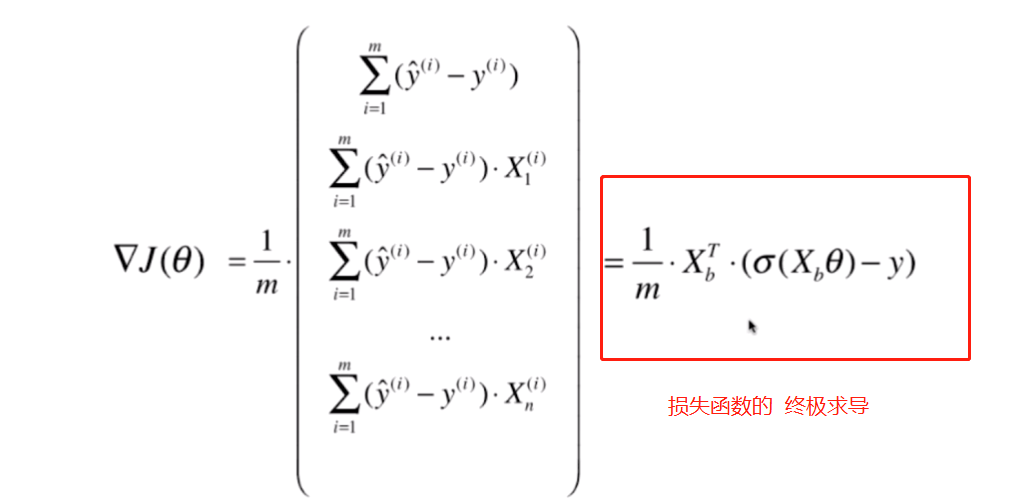
四、实现逻辑回归算法
LogisticRegression.py
import numpy as np from .metrics import accuracy_score class LogisticRegression: def __init__(self): """初始化Logistic Regression模型""" self.coef_ = None self.intercept_ = None self._theta = None def _sigmoid(self, t): return 1. / (1. + np.exp(-t)) def fit(self, X_train, y_train, eta=0.01, n_iters=1e4): """根据训练数据集X_train, y_train, 使用梯度下降法训练Logistic Regression模型""" assert X_train.shape[0] == y_train.shape[0], "the size of X_train must be equal to the size of y_train" def J(theta, X_b, y): y_hat = self._sigmoid(X_b.dot(theta)) try: return - np.sum(y*np.log(y_hat) + (1-y)*np.log(1-y_hat)) / len(y) except: return float('inf') def dJ(theta, X_b, y): return X_b.T.dot(self._sigmoid(X_b.dot(theta)) - y) / len(y) def gradient_descent(X_b, y, initial_theta, eta, n_iters=1e4, epsilon=1e-8): theta = initial_theta cur_iter = 0 while cur_iter < n_iters: gradient = dJ(theta, X_b, y) last_theta = theta theta = theta - eta * gradient if (abs(J(theta, X_b, y) - J(last_theta, X_b, y)) < epsilon): break cur_iter += 1 return theta X_b = np.hstack([np.ones((len(X_train), 1)), X_train]) initial_theta = np.zeros(X_b.shape[1]) self._theta = gradient_descent(X_b, y_train, initial_theta, eta, n_iters) self.intercept_ = self._theta[0] self.coef_ = self._theta[1:] return self def predict_proba(self, X_predict): """给定待预测数据集X_predict,返回表示X_predict的结果概率向量""" assert self.intercept_ is not None and self.coef_ is not None, "must fit before predict!" assert X_predict.shape[1] == len(self.coef_), "the feature number of X_predict must be equal to X_train" X_b = np.hstack([np.ones((len(X_predict), 1)), X_predict]) return self._sigmoid(X_b.dot(self._theta)) def predict(self, X_predict): """给定待预测数据集X_predict,返回表示X_predict的结果向量""" assert self.intercept_ is not None and self.coef_ is not None, "must fit before predict!" assert X_predict.shape[1] == len(self.coef_), "the feature number of X_predict must be equal to X_train" proba = self.predict_proba(X_predict) return np.array(proba >= 0.5, dtype='int') def score(self, X_test, y_test): """根据测试数据集 X_test 和 y_test 确定当前模型的准确度""" y_predict = self.predict(X_test) return accuracy_score(y_test, y_predict) def __repr__(self): return "LogisticRegression()"

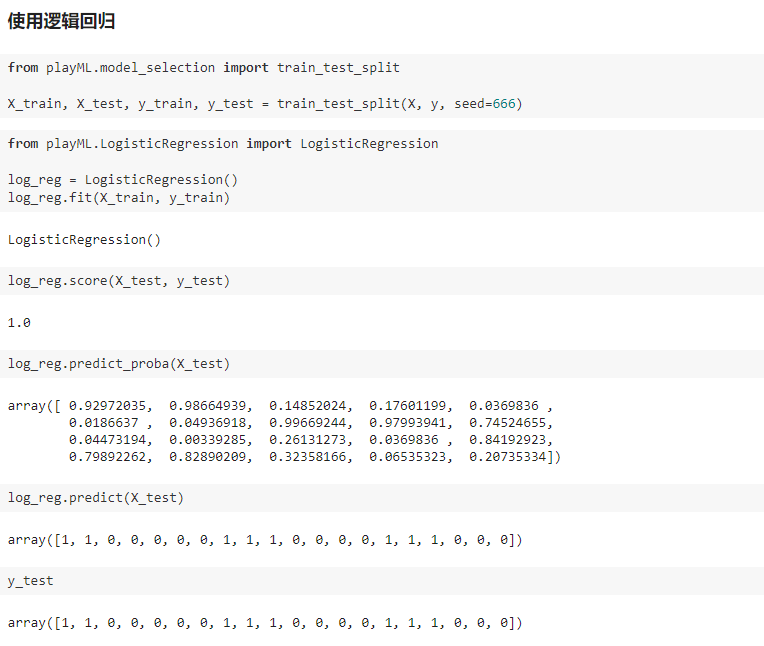
我写的文章只是我自己对bobo老师讲课内容的理解和整理,也只是我自己的弊见。bobo老师的课 是慕课网出品的。欢迎大家一起学习。
我写的文章只是我自己对bobo老师讲课内容的理解和整理,也只是我自己的弊见。bobo老师的课 是慕课网出品的。欢迎大家一起学习。
我写的文章只是我自己对bobo老师讲课内容的理解和整理,也只是我自己的弊见。bobo老师的课 是慕课网出品的。欢迎大家一起学习。